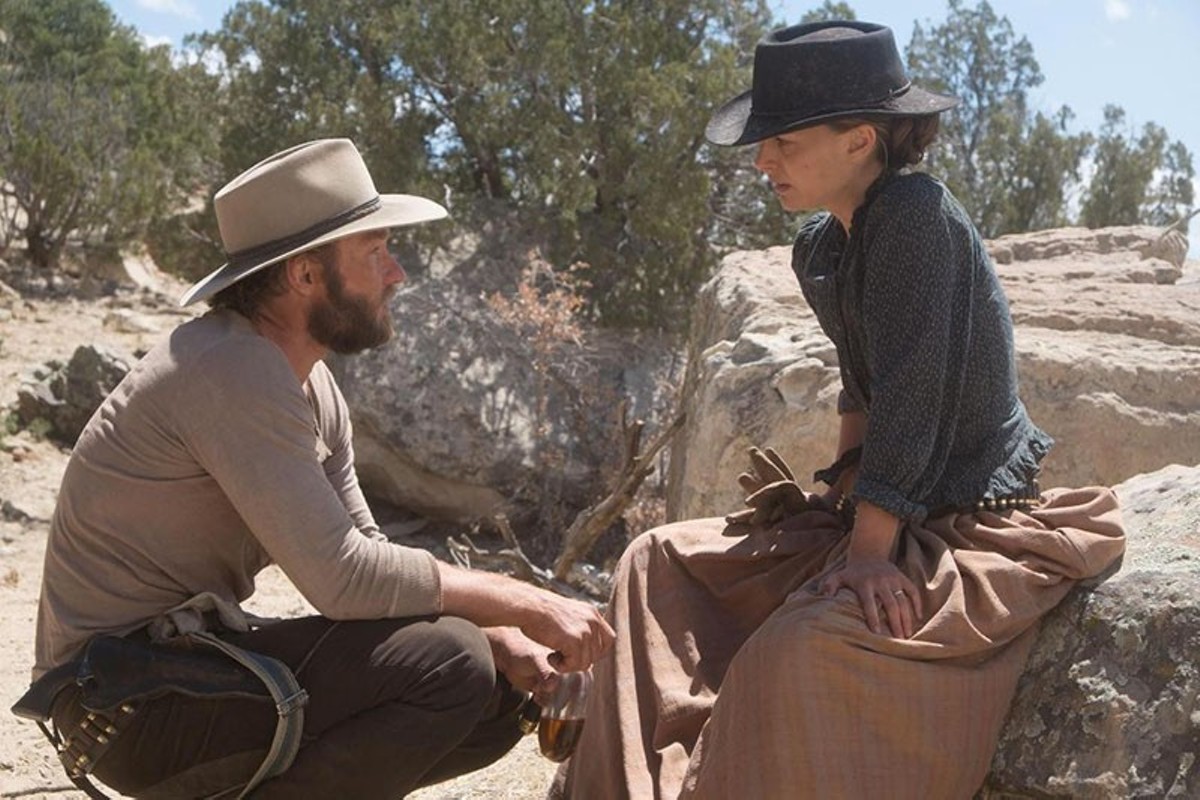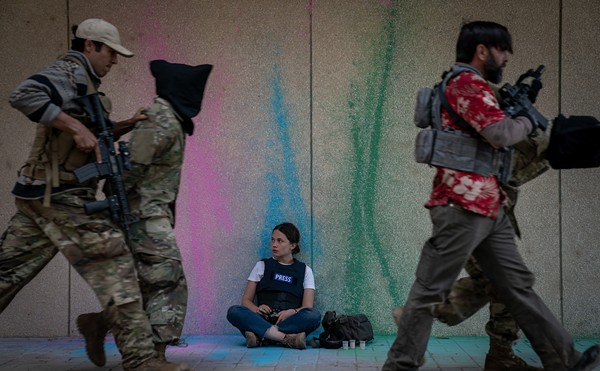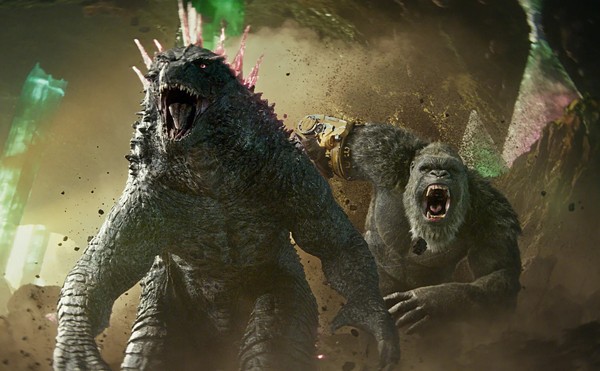The Western, more than most genres, is about a place. Not just the geography that provides its familiar backgrounds, but also the communities — ranches, unpaved streets lined with saloons and pop-up storefronts — that represent civilization coming to the untamed territories. Jane Got a Gun, like many other recent entries in the genre, offers a few brief images of Western terrain (it was filmed in Santa Fe), but limits much of its action to a single location. It's a minimalist Western, so weak in the genre's familiar iconography that at times it seems undernourished.
It's 1871. Jane (Natalie Portman) is working in her kitchen, watching her small daughter play in the yard when husband Bill (Noah Emmerich) rides in near-death thanks to multiple gunshots. As she treats his wounds (isn't it time to retire the all-too-familiar scene of cauterizing wounds with gunpowder?), he gives her bad news: The Bishop Boys are coming after him. Before we even learn exactly who the Bishop Boys are or what they want, Jane is busy buying dynamite and ammunition and approaching an old associate, Dan Frost (Joel Edgerton), for assistance. After a few false starts and a series of frequently unnecessary flashbacks revealing Jane and Dan's past, they set in for the inevitable siege.
While most of the above is accomplished in less than 30 minutes, that's about all that happens in Jane Got a Gun. The characters are simple and a bit tedious; the closest they come to having individual personalities is in the back story uncovered by the flashbacks. Jane, Bill and Dan are introduced as stubborn and stoic, and they remain that way until the final shoot-out begins.
Yes, eventually — inevitably — the Bishop Boys find their way onto Jane's land, but director Gavin O'Connor, despite giving much screen time to showing the elaborate preparations for its defense, again opts for an understated approach, leaving much of the climactic conflict off-screen or present in an almost abstractly one-sided way. Having already pared away as much as he could from the story, the personalities and the genre trappings, he ultimately decides that the best way to resolve the film is to show almost nothing.
The film displays signs of hasty rewriting (O'Connor replaced director Lynne Ramsay after production began and brought in a new writer, whose contributions share credit with both the original author and Joel Edgerton), but in the course of salvaging a troubled production, the filmmakers may have simply gutted much of the foundation for the plot. Those expecting a feminist revision of the genre, based on the title and the presence of Portman (who also co-produced), will find little to admire in a heroine who devolves from assertive and self-supporting to helpless and victimized before the film is half-over.
It would be easy to blame the film's failings on the much-publicized production troubles (in addition to losing its original director early in the filming, two cast members and a cinematographer also bailed out), just as it might be easy to suggest that the decision not to screen the film for press anywhere in the country implies a lack of faith in the finished product.
But ultimately we are stuck with the film that was made, not the one that might have been, regardless of how the Weinstein Company chooses to promote it (or, more accurately, not to). Somewhere between the early ambitions of the filmmakers and its half-hearted release, the final Jane Got a Gun is a compromised film, completed more out of necessity than ambition.






